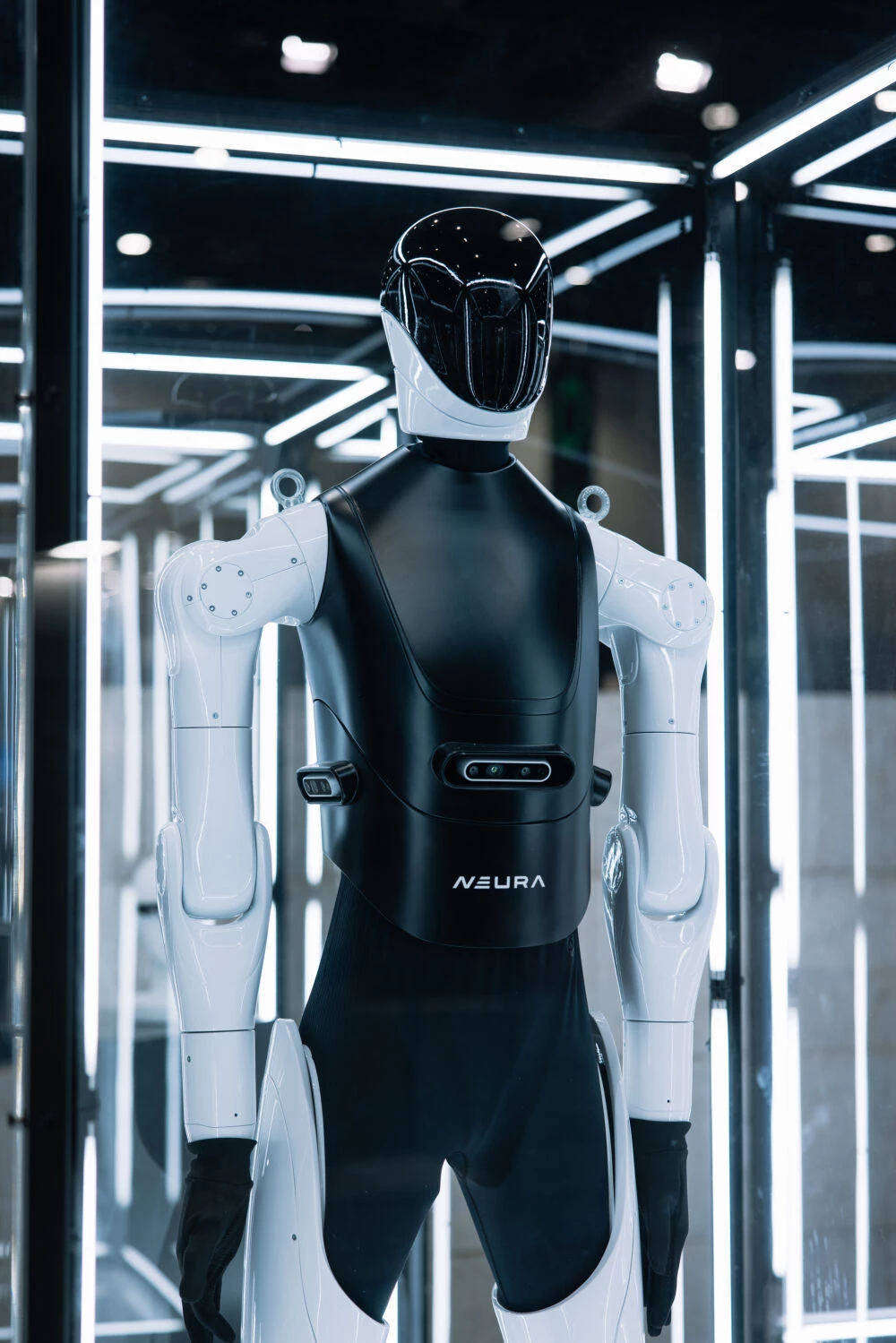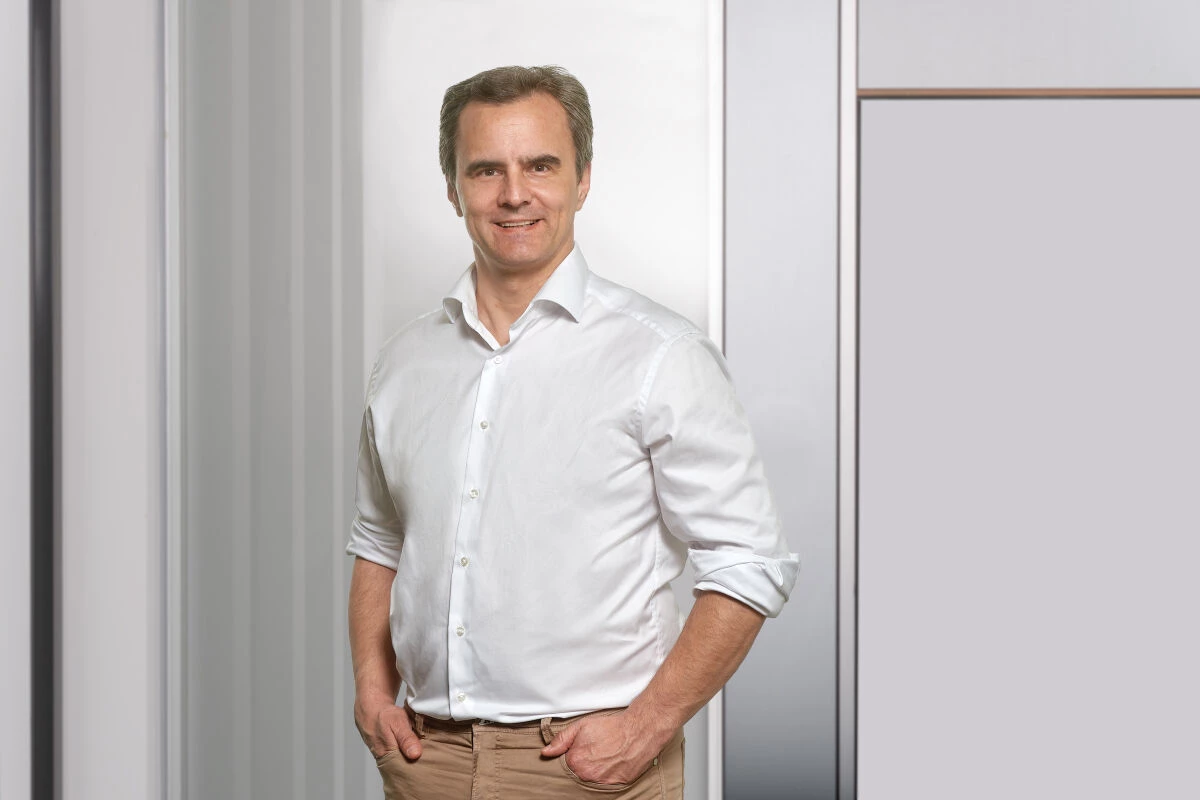The Quiet Robot Revolution – Q&A with David Reger of Neura Robotics
How researchers and companies are advancing learning machines – and what you can already see at IFA.

Robots have long moved beyond the factory floor – but at IFA 2025, their next leap is in focus. Today’s machines can already navigate complex environments, adapt to new situations and refine their skills with every task. From care and industry to the home, they are becoming collaborative partners rather than mere tools, learning to work not just for us, but with us.
“Robots that can truly interact with humans are no longer a technical utopia,” says Jan Peters, Professor of Intelligent Autonomous Systems at the Technical University of Darmstadt. The game changer: learning systems that respond flexibly to their surroundings, combined with hardware that has become far more affordable. “Just a few years ago, a humanoid research robot cost several million euros,” Peters notes. “Today, you can get a functional model for a five-figure sum.”
This democratisation is changing the pace. Robots once confined mainly to industrial automation are finding new roles in logistics, care and the home. Much of the current focus is on humanoid designs. Their human-like form allows them to operate in living spaces, offices and shops without the need for structural changes or specialised equipment.
Intelligence through Experience
It is the integration of artificial intelligence that turns robots into learning systems. Professor Peters and his team are developing algorithms that teach machines new movement patterns and behaviours – through experience rather than direct programming. “We’ve been able to show that very different robots – from four-legged models to humanoids – can learn to walk in much the same way,” he explains. “There’s less magic to walking than you might think.”
The goal in robotics development is not to replace humans, but to support them – with systems that assist without controlling. A central aspect of this is safety: “An autonomous vehicle, for example, can cause serious harm if it fails. A humanoid robot weighing 20 kilos poses a far smaller risk,” Peters notes.
Closer than ever: Robots as Companions
The devices on show at IFA range from emotional companions such as Samsung’s “Ballie” to cognitive robots designed for care facilities. Start-up Neura Robotics is seen as Germany’s most promising contender in this field. Based in Metzingen, the company is developing robots that can see, hear and learn from every interaction.
Their approach: an open technology platform that gives partners from a range of industries access to robot development. “Our goal is a new dimension of human–machine collaboration,” says Neura founder David Reger. He explains in our interview what that means in practice.
What comes next
The evolution of robotics lies not only in innovation, but in how we choose to live
with it.
How much robots change our lives will be decided not only in the lab, but in everyday life – and at trade fairs like IFA. Companies such as Ecovacs, Roborock and Bosch showcase their latest models, while some of the most exciting innovations often come from start-ups like Neura or Professor Jan Peters’ spin-off, which enables small and medium-sized businesses to deploy robots without programming skills.
Whether robots become our colleagues, carers or housemates in the future will depend not only on the technology, but on our willingness to make space for them – not as a replacement, but as a complement to our humanity •

David Reger, Neura robotics
Mr Reger, what makes your robots stand out?
Our robots are cognitive. They can see, hear and touch, process information autonomously, learn continuously and reliably distinguish between people and objects. Thanks to their advanced AI capabilities, they respond flexibly to new situations and evolve with every interaction.
How does Neura differ from other manufacturers?
The key difference lies in our
philosophy of collaboration rather than competition. With the Neuraverse, we offer an open technology platform that partners from a wide range of industries can plug into. Like an app store, it creates a dynamic ecosystem where skills learned by one robot today are available to all Neura robots tomorrow.
Can your robots act with empathy?
A robot will never truly feel emotions – nor is that its purpose. But with sensors and AI, it can recognise human emotions and interpret speech, facial expressions and gestures, and adjust its behaviour. In care settings, for example, it can detect stress or discomfort and respond with an alert to staff or a calming interaction.
What is your vision?
Our robots are not here to replace human closeness, but to make it possible again – by taking over monotonous or physically demanding tasks. That leaves more time for genuine human interaction. Technology should not isolate; it should connect.
What’s next?
With our household and service robot MiPA, we’re launching a product that genuinely makes everyday life easier – from loading the dishwasher to handling the shopping. In parallel, we’re further developing our humanoid robot 4NE1 to make it even more versatile. Our goal is to deliver up to five million cognitive robots worldwide by 2030.
GFU, in collaboration with strategy consultancy Oliver Wyman, has conducted a consumer study on household robotics. 67% of respondents look forward to the positive impact robots will have on their personal lives in the future.
Explore the Brands
Select featured exhibitors, panels,
workshops and more:
- Arpobot
- Bosch
- Dreame
- Ecovacs
- Kärcher
- Narwal
- Neura Robotics
- Realbotix
- Alpha Robotics
Programme Highlights:
- Scene Setter: The Future of Intelligence — WGSN
6 Sept, 10:45, Dream Stage - Neura Robotics: Keynote & Demo — Neura Robotics
6 Sept, 11:45, Dream Stage - Robots for Human Interaction — Realbotix
7 Sept, 12:45, Dream Stage